Course
Open-source AI is making waves again: Moonshot AI recently released Kimi K2, a Mixture-of-Experts (MoE) language model with 32 billion activated parameters and one trillion total parameters.
In this blog, I’ll explain what Kimi K2 is, how to access it, and I’ll guide you through practical use cases of Kimi K2. We'll explore how Kimi K2 can:
- Generate structured and responsive web content
- Create graphical outputs like SVGs
- Facilitate interactive data visualization and statistical analysis
- Simulate complex scientific phenomena
- Develop engaging games
- Plan detailed itineraries with interactive features
We keep our readers updated on the latest in AI by sending out The Median, our free Friday newsletter that breaks down the week’s key stories. Subscribe and stay sharp in just a few minutes a week:
What Is Kimi K2?
Kimi K2 is a language model designed by Moonshot AI, featuring 32 billion activated parameters within an extensive framework of 1 trillion total parameters. Kimi K2 is optimized for agentic tasks. It’s built to act, execute, and reason through complex, tool-driven tasks.
Kimi K2 arrives in two forms:
- Kimi-K2-Base, a foundational model for custom fine-tuning; and
- Kimi-K2-Instruct, tuned for general-purpose chat and autonomous task execution.
Kimi K2 shows promising benchmark results, especially in agentic coding and tool use:
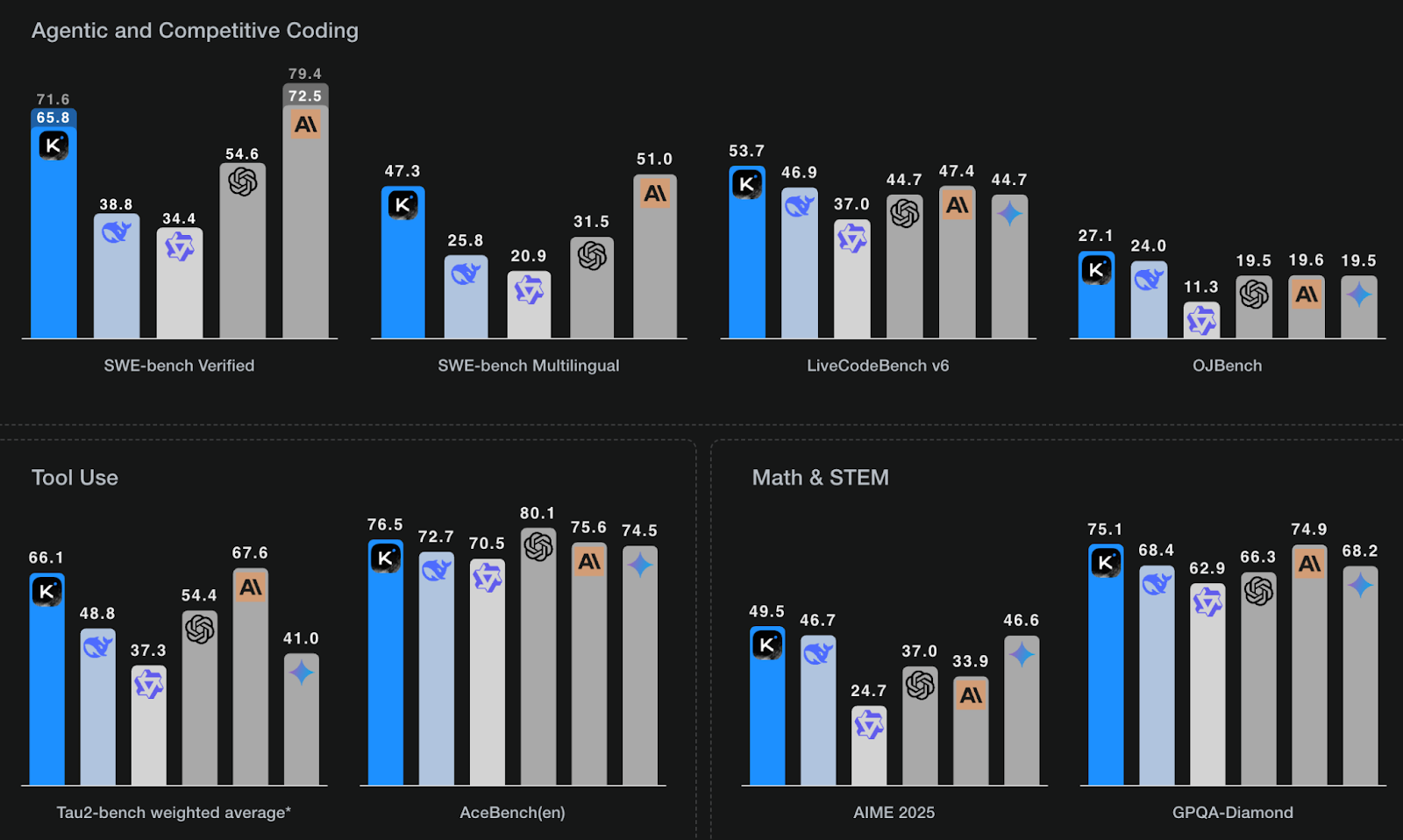
Source: Kimi K2
Compared to its open-source counterparts like DeepSeek V3, Qwen 2.5, and LLaMA 4, Kimi K2 often performs better on benchmarks but may require careful prompt engineering to achieve optimal results in practice, typically through iterative refinement. It has even been informally described as “DeepSeek V3 with fewer heads and more experts,” given its expert-routing MoE architecture.
While the API infrastructure is still maturing and the documentation could benefit from greater clarity, Kimi K2 stands out as one of the most affordable options currently available. It’s well-suited for experienced developers familiar with LLM-based workflows, though beginners may face a steeper learning curve.
How to Access Kimi K2?
You can access Kimi K2 through the chat interface and the API.
Kimi Chat
You can access Kimi K2 via the Kimi Chat interface:
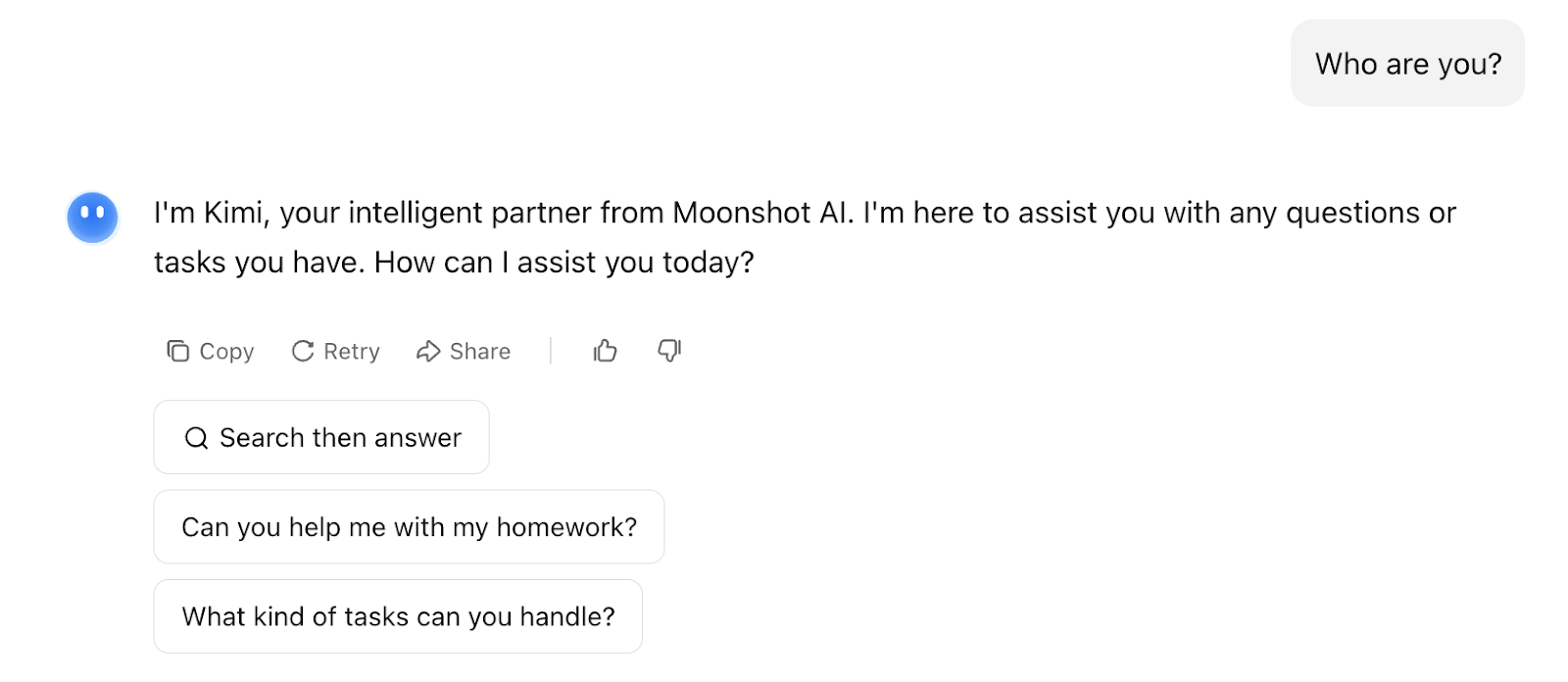
Next, I’ll explain how to set up Kimi K2 via API step by step, so feel free to jump directly to the examples section.
Kimi K2 API
You can also access Kimi K2 through an API endpoint. It’s currently free to use for general queries under the free tier for a certain number of queries before switching to a credit-based tier.

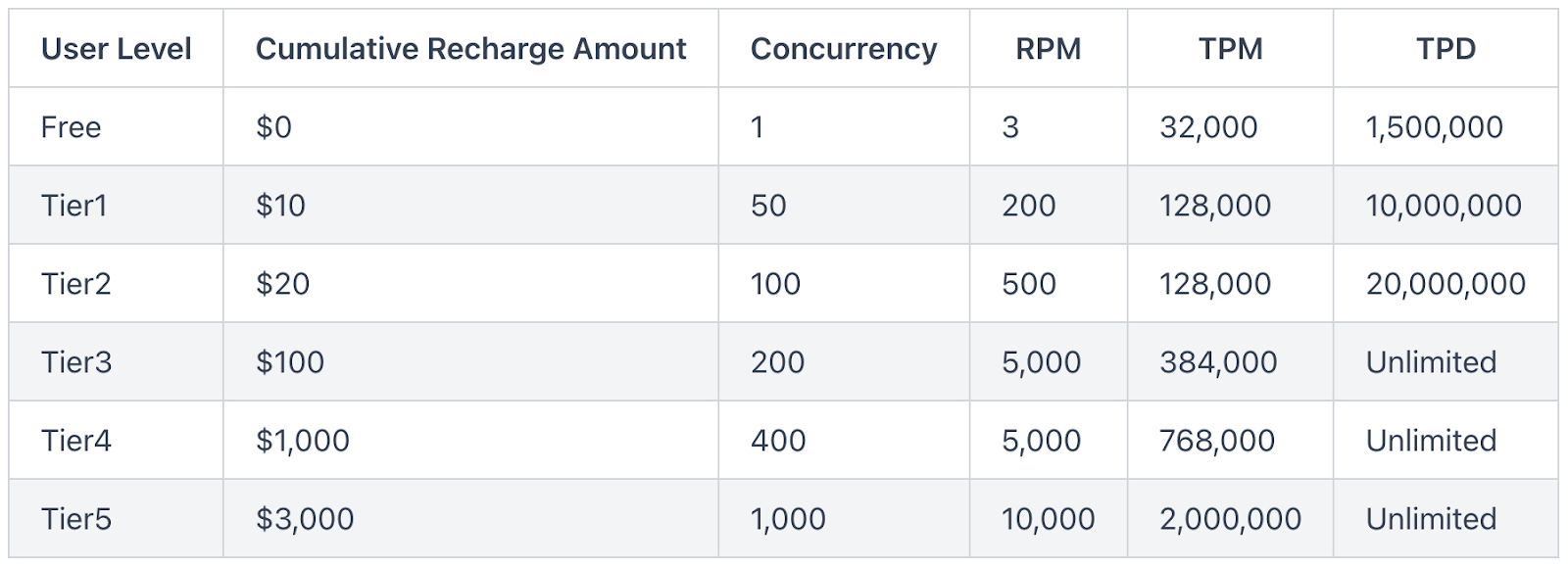
You’ll need an API key, which can be generated from the Moonshot Developer Console. Let’s go through this process step by step.
Step 1: Generating an API key
Here is how to access the Moonshot API to access the Kimi K2 model:
- Log in to the Moonshot console with your Gmail account.
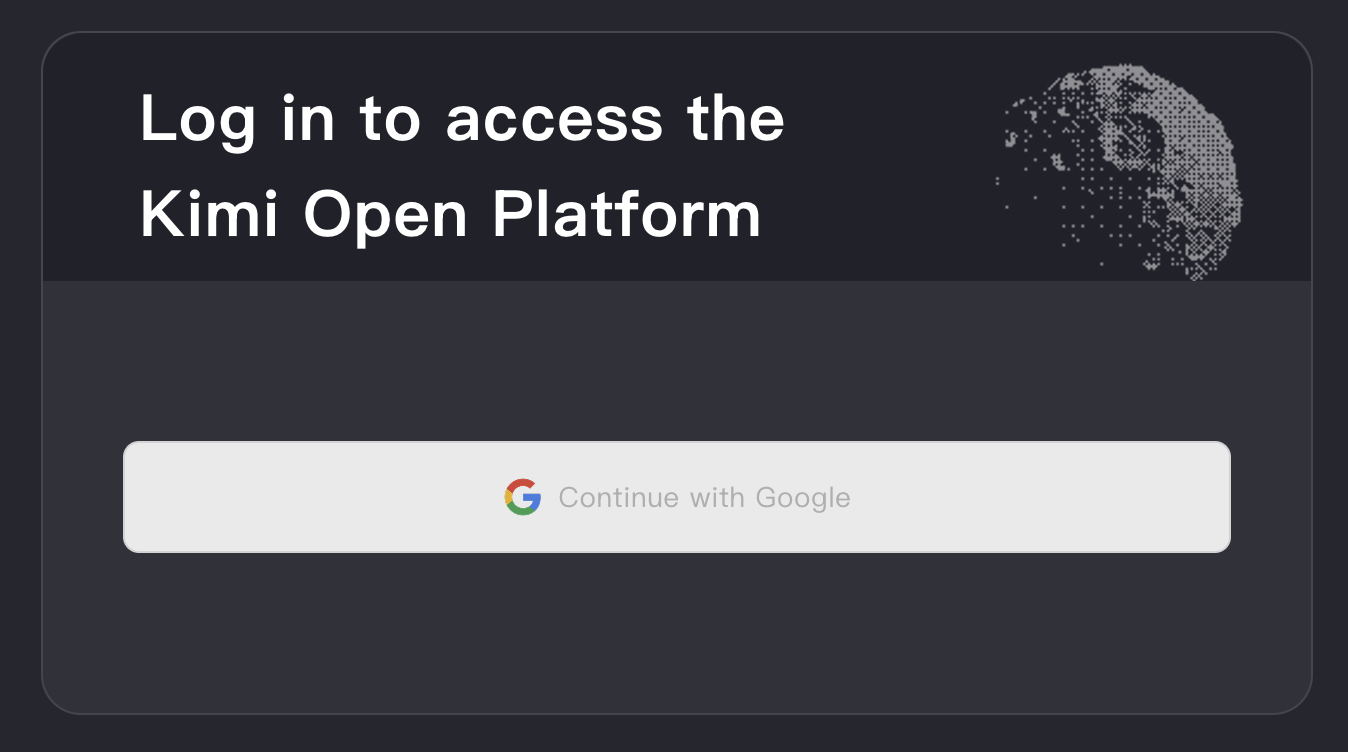
- Click on Recharge under the billing tab and add your card details. For this tutorial, around $5 is enough. You get an additional $5 as a voucher on the bill.
- Go to the API Keys tab and click on Create API Key. Fill in the API key name and project (keep it default initially), and save the API key for future use.

Step 2: Setting up a Python environment
Now, let’s set up an environment for all our local experiments:
conda create -n kimi python=3.10
conda activate kimiThis code creates and activates a Python environment named kimi.
Step 3: Setting up a global variable
It is recommended to export the API key as an environment variable in your terminal or save it to a .env file. Here is how to save it within your Python environment (kimi in this case):
export MOONSHOT_API_KEY="your_api_key"To verify if the Moonshot API is correctly set as a global variable in your environment, run:
echo $MOONSHOT_API_KEYIf you see the key value when running the above command, you can proceed; otherwise, first set up the key as a global variable. If you are setting up the API key in a .env file, then save it as follows:
MOONSHOT_API_KEY=your_api_keyNow, we are ready to explore the capabilities of Kimi K2.
Step 4: Making an API call
Now that our API key is set up, let’s try a basic chat completion task with the Kimi K2 model.
from openai import OpenAI
import os
MOONSHOT_API_KEY = os.getenv("MOONSHOT_API_KEY", "your-moonshot-api-key")
client = OpenAI(
api_key=MOONSHOT_API_KEY,
base_url="https://api.moonshot.ai/v1"
)
def simple_chat(model_name: str):
messages = [
{"role": "system", "content": "You are Kimi, an AI assistant created by Moonshot AI."},
{"role": "user", "content": "Explain LLM to a 5-year-old."}
]
response = client.chat.completions.create(
model=model_name,
messages=messages,
stream=False,
temperature=0.6,
max_tokens=256
)
print(response.choices[0].message.content)
simple_chat("kimi-k2-0711-preview")The above Python script sets up the API client using the provided API key and endpoint. The simple_chat() function sends a predefined prompt to the Kimi model(kimi-k2-0711-preview) using a chat-style format with system and user messages, which then prints the assistant's response.

Example 1: Website Simulation
Next, I’ll share my firsthand experience testing Kimi K2 across diverse scenarios. I began by generating a simple website simulation using the Kimi K2 chat interface's integrated HTML editor, which enables users to preview the generated HTML code. Here is the prompt I used:
Prompt: Create a SaaS landing page that has many features
Kimi K2 took significantly longer (approximately 5 minutes) to generate code compared to other models I’ve recently tried (like Grok 4 or Gemini Diffusion). However, despite this initial delay, the resulting application's graphics and interactive elements were highly accurate. Additionally, Kimi K2 effectively utilized its agentic capabilities to fetch a relevant royalty-free image from Unsplash for the HTML page.
Example 2: Generating SVG Representations
Next, I tried generating a few SVG (Scalable Vector Graphics) representations. Although it took the model some time to return a good SVG image, it ultimately did a good job.
Prompt: Create an SVG representation of a butterfly
Initially, I asked the model to create a representation of a Dragon, and the output was just some shadow and colors. However, after a few iterations, the model generated a good representation of a butterfly.

Example 3: Analysing a Dataset With Simulation
In this example, I asked Kimi K2 to analyze a simple dataset and present its findings through an HTML dashboard. Here is the prompt I used:
Prompt: Create an interactive HTML dashboard with a smooth and modern UI that allows users to simulate and visualize the effects of remote work on salaries across various job roles, based on the provided ds_salaries.csv dataset.
The dashboard should include the following enhanced components:
1. Dynamic Simulation Controls (User Simulator):
Responsive slider inputs and number fields for adjusting:
Remote premium (%)
Job-profile-specific multipliers
Base salary inflation or deflation
Real-time feedback on how input changes affect the dataset
Tooltips explaining each parameter’s impact
2. Interaction Graphs and Heatmaps:
Salary vs job profile × remote ratio interaction plot
Optional toggles to switch between bar, line, or heatmap views
Highlight outliers or statistically significant interactions
3. Real-Time Statistical Insights:
Live regression output (OLS, ANOVA)
Highlight p-values and significance thresholds
Visual residual plots or model diagnostics (if feasible)
4. Modern Interface Design:
Mobile-friendly, zero-dependency design using vanilla HTML/CSS/JS
Card-style layout, with collapsible sections for clarity
Smooth animations, transitions, and dark/light toggle
Ensure all output is copy-paste ready in a single index.html file, with no external dependencies. Include placeholder logic for loading the CSV via a <input type="file"> element. Bonus: add CSV preview table and download-export options for simulated data.
In this experiment with Kimi K2, the model successfully accepted and processed the uploaded dataset, correctly updating the simulation controls based on variables derived from the data. The user interface supported features like switching between dark and light modes, offering a smooth visual experience.
However, the output lacked several key analytical components. There was no interaction plot, no heatmap visualizations, and no real-time statistical insights such as regression summaries or ANOVA results. While Kimi K2 handled the structural generation and UI logic well, its limitations in statistical reasoning and interactive visualization were evident in this use case.
Example 4: Science Simulation
The team behind Kimi provided a use case for their chat interface to explore scientific simulations and preview their HTML code within the chat interface. Here are the prompts that I tried:
Prompt: Create a 3D Particle Galaxy Simulation
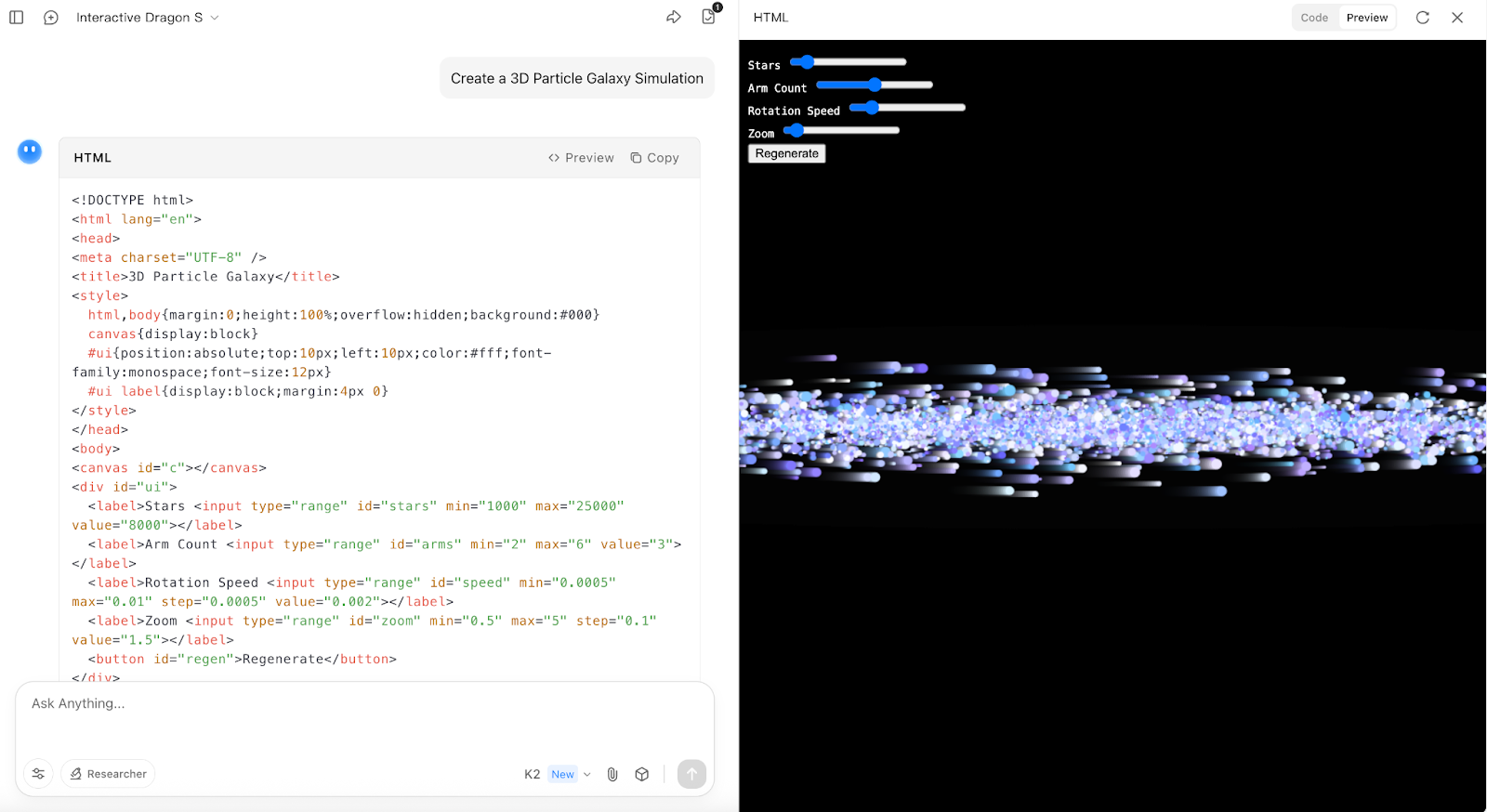
I tried making a few edits to the simulation to see how the model adapts to any modifications, like a top view with proper particle rotation and varying particle size.
Revised Prompt: Modify the current 3D Particle Galaxy Simulation to render the galaxy from a top-down perspective (as seen from above the galactic plane). The stars and arms should appear as a spiral pattern radiating outward, with rotation happening around the Z-axis (perpendicular to the screen). Ensure that:
The star positions are distributed in a flat spiral from the top view
Rotation speed affects angular rotation within the XY plane
No vertical tilt or Y-axis thickness is shown—flatten the Z-dimension
Camera/viewpoint is fixed above the galaxy (orthographic or top-down perspective)
Optionally add a central glowing bulge to simulate the galactic core
Keep all existing controls (star count, arm count, zoom, rotation speed), and make sure regeneration reflects the top-view layout.
The revised prompt resulted in a significantly improved visualization, demonstrating the model's ability to quickly adapt to prompt modifications. However, the sliders provided in the preview were purely decorative, offering no meaningful interaction or impact on the actual galaxy simulation.
Example 5: Game Simulation
Inspired by the original documentation, I tried prompting the model to generate a web-based game similar to the dinosaur game you might have played when the Internet is down. Here’s the prompt I used:
Prompt: Create a web-based 3D Dino Survival Game.
Design a prehistoric environment with low-poly style trees, rocks, and cliffs.
Animate the dino with simple walking, jumping, and crouching mechanics using basic physics (gravity, inertia).
The player controls the dino using WASD keys and spacebar to jump over obstacles.
Use hand-coded textures for the terrain and skybox to emulate a "cave painting" style (à la Altamira), using procedural patterns instead of image links.
Add background elements like moving clouds and flying pterosaurs for immersion.
Make the ground uneven and bumpy, with smooth transitions between terrain segments.
Randomly generate obstacles like cacti, lava pits, or other dinos.
Score increases as the dino survives longer — display in top-left with a Flintstones-style counter.
Add ambient audio: low drumbeats and jungle sounds.
Optional:
Include a night mode with fireflies and glowing eyes in bushes.
Use Three.js or Babylon.js if needed, but fallback to pure WebGL/Canvas if keeping it zero-dependency.
To my surprise, the initial version of this game was unusable. I attempted to regenerate it using a refined and longer prompt while remaining within the context window. This was the result:
The result was slightly better, but the gameplay mechanics didn't function as intended. This observation highlights that one-shot prompting can lead to performance issues when developing complete software projects, suggesting that utilizing Kimi K2 within an agentic framework, with iterative prompting and adjustments, generally yields better and more reliable results, as mentioned by the team in the limitations section.
Example 6: Holiday Planner
In this example, I explored the web search angle of Kimi K2 by asking it to build an itinerary and share it in an HTML page format.
Prompt: I’ve been feeling mentally and physically exhausted, and I’m looking for a deeply rejuvenating 5-day wellness retreat to help reset my mind and body. I’m based in San Francisco and open to traveling within or outside the U.S. Please start by searching for wellness retreats that align with my health goals—such as stress relief, digital detox, yoga, and clean eating—and fit into my flexible schedule. Prioritize options that include nature immersion, spa treatments, and mindful activities like meditation or breathwork.
Once you’ve found the ideal retreat, plan everything: travel arrangements (flights or local transport), accommodation bookings, daily yoga sessions, massage or spa appointments, healthy meals (vegan or vegetarian preferred), and any nearby nature-based or cultural experiences (like forest walks, sound baths, or tea ceremonies).
In addition, check the weather forecast for the chosen location during my potential travel window and suggest the optimal dates. Then compile a full daily itinerary, broken down by time, including:
Morning rituals and sessions
Meals and diet plan
Afternoon activities
Evening wind-down routines
Local exploration opportunities
I would also like a beautiful route map showing my departure from San Francisco and the retreat destination, with markers for significant stops, sights, or moments of interest.
Finally, instead of syncing with my calendar or sending emails, please compile the full plan into a visually stunning local HTML travel page. The HTML page should:
Conform to the Neo-Brutalism style
Use a bold, expressive layout with intentional design clashes
Employ an earthy yet rich color palette (soft greens, stone grays, deep browns)
Include hand-drawn or illustrated wellness-themed elements (e.g., yoga silhouettes, sun/moon motifs)
Contain a clean visual route map and a collapsible daily itinerary
Be fully responsive across mobile and desktop
Pay careful attention to font choices and contrast
This HTML page should feel serene, modern, and grounded, and serve as my personal wellness planning portal.
The prompt took me about two iterations to draft an itinerary and preview it in the form of an HTML page. However, the information accessed via the web search tool helped the model to draft a perfect itinerary.
Conclusion
Kimi K2 is a noteworthy addition to the open-source LLM ecosystem. During my testing, it delivered strong results in visual and structural generation, especially when guided through step-by-step prompts or iterative refinement.
That said, Kimi K2 is not flawless. It can be slow to respond, some outputs—particularly in simulations and game logic—require multiple iterations to get right, and interactive elements don’t always function as intended.
Overall, Kimi K2 offers real capabilities for developers willing to experiment. If you’re comfortable with LLM-based workflows and want more control over agentic behavior at a low cost, it’s a model worth exploring.

I am a Google Developers Expert in ML(Gen AI), a Kaggle 3x Expert, and a Women Techmakers Ambassador with 3+ years of experience in tech. I co-founded a health-tech startup in 2020 and am pursuing a master's in computer science at Georgia Tech, specializing in machine learning.
